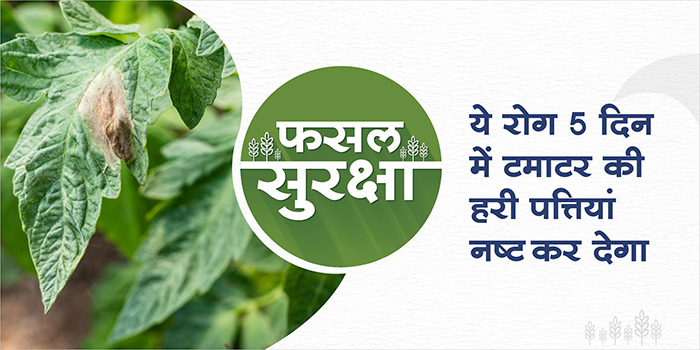- Chemical treatment: Before sowing, treat the seeds of watermelon seeds with fungicide Carbendazim 12% + Mancozeb 63% WP @ 2.5 gram/kg seed or Carboxin 37.5% + Thiram 37.5% DS @ 2.5 gram/kg seed.
- Biological treatment: Trichoderma Viride@ 5 gram PSB bacteria @ 2 gram /kg seeds or Pseudomonas Fluorescens @ 50 gram/kg seeds
- While doing seed treatment ensure to use the treated seed for sowing on the same day. Do not store the treated seeds.
Bird flu havoc in many states including Madhya Pradesh
Bird flu is spreading rapidly in many states of the country and efforts are being made by the government to deal with it. The poultry market has been affected in many states due to bird flu. According to the news, poultry business is currently banned in many states including Madhya Pradesh.
Giving information about this growing infection of bird flu, Union Minister Sanjeev Balayan said that the bird flu infection has been confirmed in Madhya Pradesh, Rajasthan, Haryana and Kerala and in view of its increasing cases, on behalf of the Central Government A control room has also been built in the capital Delhi. This control room in Delhi will be in touch with all the states of the country. Let us know that the case of avian influenza was first reported in India in 2006.
Source: Jagran
ShareHow will the weather be in the coming days in MP, know the weather forecast
Rainfall in many parts of the country will gradually decrease. Weather will remain dry in the coming days in Madhya Pradesh.
Video Source: Skymet Weather
ShareMeasures to control tobacco caterpillar in wheat
- This caterpillar attacks the leaves of the wheat crop.
- The caterpillar scratches the green part of the leaves and destroys it.
- The larvae of this insect feed on soft leaves.
- A web structure is formed on the leaves when this worm attacks.
- Profenophos 40% + Cypermethrin 4% EC @ 400 ml/acre or Emamectin Benzoate 5% SG@ 100 gram/acre or Chlorantraniliprole 18.5% SC@ 60 ml/acre or Novaluron 5.25% + Emamectin Benzoate 0.9% SC@ 600 ml/acre.
- As a biological treatment use Beauveria Bassiana @ 250 gram/acre.
Management of black rot disease in cabbage
- Early symptoms include yellow spots appearing on the leaves.
- Later these symptoms grow inside the leaves and the stem.
- These symptoms is what that differentiate black rot from wilt disease
- As the disease is spread the cabbage leaves turn brown.
- For effective control of this disease use Streptocycline @ 20 gram/acre Validamycin 3% SL@ 300 ml/acre or Copper hydroxide 77% WP @ 750 gram/acre or Kasugamycin 5% + Copper oxychloride 45% WP@ 400 gram/acre
- As a biological treatment, spray Pseudomonas fluorescens@ 250 gram/acre.
Management of spotted wilt virus in Tomato
- Spotted wilt virus in tomato is spread by thrips.
- The initial symptom of this disease is Violet brown spots on new leaves of tomato plants.
- These spots gradually turn into rings.
- These spots get unified into big spots and begin destroying the tissues of the leaves.
- Increased infection can affect the ripening process of tomato fruit.
- Light yellow colored spots are formed on the unripe fruits, slowly these spots grow into large size spots.
- To prevent this, use Fipronil 5% SC @ 400 ml/acre or Lambda cyhalothrin 4.9% CS @ 200 ml/acre or Spinosad 45% SC @ 75 ml/acre.
- Use Bavaria Basiana @ 250 ml/acre as a biological treatment.
MP government will open e-mandi, farmers will get fair price of produce
To provide a fair price to the farmers of Madhya Pradesh, the Shivraj Chauhan government of the state has made preparations for starting e-mandis. Taking steps in this direction, 45 such primary agricultural credit cooperatives have been selected in Bhopal, Indore, Jabalpur and Ujjain regions, where there is a facility for warehousing or there is space available to build a warehouse.
It has been decided to establish e-mandi at these selected places in the coming three years. In these mandis, the price will be determined by showing a sample to the traders through the Internet. If the farmers are satisfied with the fixed price then the deal will be done.
Source: Jagran
ShareLate blight management in Tomato crop
- The disease spreads by Phytophthora fungus. Late blight is a serious disease that can severely affect tomato crops.
- Late blight destroys the green leaves of plants within 5 days.
- In this disease, spots begin to appear on the edges of the leaf and gradually spread all over it, branches and stem also get affected and on the lower surfaces of the leaves white color shells are formed, which later turn brown and black.
- Use Chlorothalonil 75% WP @ 400 gram/acre or Metalaxyl 8 % + Mancozeb 64% WP @ 600 gram/acre or Tebuconazole 10% + Sulphur(s) 65% WG @ 500 gram/acre or Kasugamycin 5% + Copper Oxychloride 45% WP @ 300 gram/acre
- As a biological treatment Pseudomonas Fluorescens @ 250 gram/acre or Trichoderma Viride @ 500 gram/acre.
Youth of MP will be trained in solar energy technology
The government is constantly promoting solar energy in the country. Efforts are also being made to increase the income of farmers by using solar energy and for this purpose, Kusum Yojana has been started. In view of the increasing trend of solar energy, now the state governments are also training youths for employment generation in rural areas.
Energy Swaraj Foundation along with Madhya Pradesh Energy Development Corporation and Rajiv Gandhi Technological University is going to provide six days of paid practical training from 5 to 10 April 2021 for skill development in the field of solar energy technology for young entrepreneurs in Madhya Pradesh.
Under this, the target is to train ten people from each district of Madhya Pradesh state. If you have graduated in ITI / Diploma / Engineering / Science and your maximum age is 40 years, then you can join this training. The last date to apply for joining is February 28. Mail this email address (info@energyswaraj.org) for the application form.
Source: Kisan Samadhan
ShareRain could occur in these states including Madhya Pradesh for two more days
In many areas of central India, rains will continue for the next 48 hours. The southern states are expected to receive rains from January 11-12. Whereas in most parts of North India, due to increasing flow of cold winds, cold wave can be tightened in some areas.
Video Source: Skymet Weather
Share









